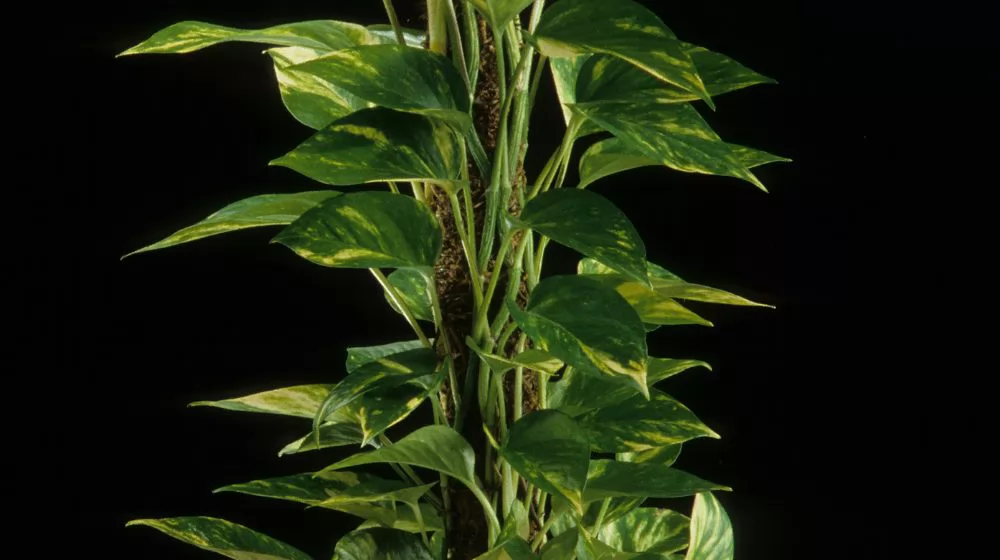
Table of contents:
Embarking on the journey of nurturing climbing plants in your garden presents the question of choosing the right support structure. Coir poles and moss poles emerge as two popular options, each with its unique characteristics. In this exploration, we will delve into the attributes of coir poles and moss poles to help you make an informed decision on which might be the better fit for your garden.
Before delving into a comparison between Coir Poles and Moss Poles, it's crucial to understand the various types of climbing poles available for your plants. The most prevalent type is the traditional moss pole, crafted from natural moss that undergoes a drying and preservation process. These poles exude a natural aesthetic, adding a touch of greenery to your living space. However, a drawback is that they require replacement every few years as the moss naturally decomposes over time.
On the other hand, Coir poles present an alternative option. Crafted from bamboo, these poles are lightweight, providing the advantage of easy maneuverability. They are a practical choice for those who prefer the flexibility to rearrange their garden or indoor plant setup.
In addition to moss and Coir poles, there are also plastic, PVC pipe, or metal alternatives. These materials offer the most cost-effective solution but come with a trade-off in terms of their natural appearance. Plastic, PVC, or metal poles may lack the organic look of moss or Coir poles. Moreover, they tend to have a shorter lifespan, necessitating more frequent replacements.
Understanding these various types of climbing poles sets the stage for a comprehensive evaluation of the differences between Coir Poles and Moss Poles in the context of your garden. Let's explore these distinctions further.

Epiphytic plants, particularly those with vining species, rely on external support to ascend, and their aerial roots have found a reliable companion in climbing structures. Moss poles emerge as a particularly effective solution, offering a fibrous material that ensures secure anchorage, facilitating the upward journey of these plants in a unique and intriguing manner.
Moss poles serve as an invaluable climbing support for plants, playing a pivotal role in fostering their growth and stability. The necessity of moss poles becomes apparent for several reasons:
1. Height Potential:
Moss poles play a crucial role in enabling plants to achieve their maximum height potential. Without the support of a moss pole, plants are constrained in their vertical growth. As they strive to reach new heights, the absence of proper support can lead to issues such as top-heaviness, causing plants to droop or even topple. Moss poles offer the necessary structural reinforcement, allowing plants to gracefully reach their tallest possible heights.
2. Plant Health:
Beyond promoting height, moss poles contribute to the overall health of your plants. As plants grow, they instinctively seek structures to climb and latch onto. In the absence of a moss pole, they might attach themselves to furniture or walls, potentially causing damage that is both unsightly and challenging to rectify. Moss poles provide a designated and safe climbing space, preserving the integrity of your home while ensuring the well-being of your plants.
3. Aesthetic Appeal:
Moss poles not only serve a functional purpose but also add a unique and visually appealing dimension to any space. Their vibrant colors and natural textures create an interesting contrast to more conventional decor pieces, seamlessly integrating with your existing design scheme. Available in various shapes and sizes, moss poles offer a customizable aesthetic touch that enhances the overall ambiance of your home.
In essence, beyond their practical benefits, moss poles contribute to the aesthetic harmony of your living spaces, making them a versatile and stylish addition to your gardening repertoire.
Gardening is a blend of satisfaction and challenges, requiring a comprehensive understanding of tools that can aid in the process. Among these tools, the moss pole stands out as a frequently underestimated yet crucial element in a gardener's arsenal.
A moss pole serves as a clever mechanism to provide climbing vines with the essential nourishment they need to thrive, effectively mimicking a natural growth habitat in the sky. It offers a delightful means of ensuring the health of your plants by facilitating the absorption of micronutrients and water through the roots.
Typically constructed from sphagnum moss and covered in moss, these poles are inserted into the ground or pot, providing a supportive structure for plant growth. The benefits of moss poles extend beyond mere structural support, particularly for climbing plants such as ivy, pothos, monstera deliciosa, and other indoor varieties. These poles act as natural supports, enabling plants to climb, explore, and spread in various directions.
Moreover, moss poles contribute to the overall well-being of plants by effectively increasing humidity in the surrounding atmosphere. This feature proves advantageous for certain plants, especially those that thrive in higher moisture levels. The moss itself plays a role in retaining moisture, aiding in the hydration of plant roots and creating an environment conducive to optimal growth.
Beyond their role in supporting growth and enhancing humidity, moss poles also function as protective shields for plants against adverse weather conditions. As the moss covers the pole, it acts like a protective blanket, safeguarding plants from the potentially damaging effects of wind and rain. This added layer of defense ensures that your plants can withstand and flourish even in challenging weather.
In essence, the moss pole emerges as a multifaceted tool in the gardener's toolkit, contributing to the overall health, growth, and protection of climbing plants in both indoor and outdoor settings. Understanding and incorporating the benefits of moss poles can significantly elevate the gardening experience, making it more rewarding and less frustrating.

Gardeners inclined towards an authentic and natural aesthetic often opt for moss poles. These poles, available in various shapes and sizes, effortlessly complement your decor, offering a versatile choice for different spaces. This adaptability makes moss poles a practical option for those dealing with limited space or seeking low-maintenance plant care.
In contrast to coir poles, moss poles boast durability, resisting rotting and deterring pests. Notably, the moss itself serves a dual purpose, acting as an effective moisture barrier. This function prevents water from seeping into the coir bowl, preserving the integrity of the coirs over time.
Ultimately, the appeal of the moss pole lies in its natural composition, adding an organic touch to your gardening endeavors.
Moss poles, while offering unique advantages, do come with certain drawbacks compared to coir poles. One notable aspect is their higher cost in comparison to coir poles. Additionally, some individuals perceive moss poles as less visually appealing than their coir counterparts.
A critical consideration is the moisture resistance of moss poles. Unlike coir poles, moss poles are not as adept at resisting moisture. This makes them less suitable for storing coirs, as exposure to water or humidity over time can lead to damage.
While moss poles may have aesthetic appeal, they might not be the most reliable choice for pots, particularly in windy conditions. Their performance can be less consistent, and regular maintenance becomes essential for their upkeep. The need for frequent replacement is also a factor that gardeners should be mindful of when opting for moss poles. Embracing the mossy charm requires a commitment to keeping it fresh through regular care and replacement.
The coir pole, crafted from coconut husk, stands out for its solid and durable composition, making it a robust choice for supporting climbing plants. Beyond its structural strength, the coir pole serves as a natural barrier, offering protection to your plants against various environmental elements. This resilience makes it particularly well-suited for outdoor use, providing an extra layer of defense for your garden and outdoor spaces.
In addition to its protective qualities, the coir pole contributes to privacy in gardens and outdoor areas. Its dense and fibrous nature creates a barrier that not only supports plant growth but also adds a visual screen, enhancing the sense of seclusion in outdoor settings. This makes coir poles an ideal choice for those looking to create a private and green oasis in their gardens.
It's worth noting that the primary purpose of coir poles aligns with that of moss poles. Both serve as effective climbing supports for plants, encouraging vertical growth and offering a stable structure for vines and climbers. The versatility of coir poles, coupled with their natural and durable characteristics, makes them a reliable and functional choice for enhancing both the aesthetics and practicality of your garden.

Choosing coir poles for your plants offers several advantages over alternatives like moss or dwarf bamboo. These poles are space-efficient, easy to transport and assemble, providing robust support for plants of any size. Particularly well-suited for climbers, coir poles demonstrate a durability that sets them apart from other plant support options, minimizing the risk of breakage.
In terms of affordability and longevity, coir poles prove to be a cost-effective choice compared to moss poles. Their straightforward planting process makes them a beginner-friendly option, making gardening more accessible for those new to the practice.
The durability of coconut coir, the material from which coir poles are crafted, surpasses that of synthetic materials such as PVC, plastic, or aluminum. This natural resilience ensures a longer lifespan for coir poles, minimizing the likelihood of cracking or deterioration over time.
Coir poles not only excel in durability but also in ease of care. Their simple planting process makes them user-friendly, requiring minimal effort to maintain. Moreover, coir poles exhibit superior wind resistance compared to other vegetative barriers like moss or bamboo poles, thanks to the shallow rooting structure of coconuts. The climbing habit of coconuts further enhances their suitability for pole plantings, providing stability even in windy conditions.
In summary, coir poles present a practical and durable alternative for plant support, offering ease of use, affordability, and enhanced wind resistance. Their versatility makes them an ideal choice for both seasoned gardeners and beginners alike.
Coirs pose challenges when used with coir poles, as they can slip out of the pole, potentially causing damage to both the coirs and the pole itself. Additionally, coirs may become wedged between the pole slots, making extraction difficult, and they can be dislodged if the pole is knocked over or mishandled.
Long-term storage of coirs in coir poles is not recommended. The slots in the bar may lead to coirs rubbing against each other, resulting in potential discoloration or damage over time. Furthermore, coirs stored in coir poles may tarnish due to exposure to air or humidity, affecting their overall quality.
It's important to note that coir, in general, has a reputation for high salt content, especially in low-grade varieties. This aspect should be considered when using coirs with coir poles, as excessive salt content can have implications for plant health and growth.
When it comes to popular options for tree poles utilized in climbing, two prevalent choices are the coir pole and the moss pole. The primary distinction lies in their composition, where coir poles are crafted from coir, while moss poles are constructed using living moss. While other alternatives may exist, coir and moss poles stand out as the most commonly used options for providing support to climbing plants. Each offers unique characteristics that cater to different preferences and needs in the realm of gardening and plant cultivation.

Selecting the right support structure for your climbing plants is crucial, and two popular choices are the Moss Pole and the Coir Pole. Let's delve into the characteristics of each to help you determine which one might be better suited for your plants.
Moss Pole:
Moss poles are crafted using living moss, providing a natural and visually appealing support for climbing plants. The moss creates a lush environment, mimicking the plant's natural habitat. However, there are considerations to keep in mind. Moss poles may require more maintenance, as the living moss needs to be kept moist to thrive. While they offer a unique aesthetic, moss poles may need to be replaced more frequently due to the eventual decomposition of the moss.
Coir Pole:
On the other hand, Coir poles are made from coconut husk fibers. They provide a sturdy and durable support structure for climbing plants. Coir poles are known for their longevity, as they don't decompose like living moss. They are also low-maintenance and resistant to pests. Coir poles are suitable for those looking for a more practical and long-lasting solution.
Considerations:
Aesthetic Preference:
If you prefer a natural and lush look, a Moss Pole might be the right choice.
For those who lean towards a clean and functional appearance, the Coir Pole could be more appealing.
Maintenance:
Moss poles may require more attention to keep the moss healthy and vibrant.
Coir poles are low-maintenance and offer a durable solution.
Longevity:
Coir poles generally have a longer lifespan compared to moss poles.
Cost:
Moss poles might be more expensive due to the living moss component.
Coir poles are often more cost-effective.
Yes, a Coco Moss Pole is generally suitable for Monstera deliciosa. Monstera deliciosa, commonly known as the Swiss cheese plant, is a popular climbing and trailing plant that naturally thrives in tropical environments. These plants have aerial roots and benefit from a support structure as they grow.
Coco Moss Poles, made from coconut husk fibers, provide an ideal support system for Monstera deliciosa. The coir material offers a sturdy and natural surface for the plant to cling to and climb. The fibrous texture of the coco moss pole mimics the natural conditions that Monstera deliciosa would encounter in its native habitat.
When using a Coco Moss Pole for Monstera deliciosa, ensure that the pole is securely placed in the pot, and as the plant grows, you can guide its aerial roots towards the pole. This support structure helps the Monstera deliciosa to grow upward, creating a visually appealing and well-supported plant.
The growth of plants in coir, specifically in coir-based growing media, can be influenced by several factors. Coir, derived from coconut husk fibers, has gained popularity as a growing medium due to its unique properties. However, whether plants grow faster in coir depends on various factors, including the type of plant, the specific coir product used, and how it is integrated into the overall growing environment.

In the verdant realm of gardening, the choice between a coir pole and a moss pole hinges on various factors, from aesthetics to practicality. While coir poles showcase durability and versatility, moss poles exude a natural charm. Ultimately, the decision rests on your gardening preferences and the specific needs of your green companions. Whichever path you choose, both coir and moss poles offer a canvas for your climbing plants to ascend and thrive, adding a vertical dimension to the beauty of your garden.You need climbing poles for your garden plants, please contact Linkwin to provide you with high quality products!











We use cookies to make the website work, to provide advanced features, social media and traffic analysis, and we use analytics and third-party advertising cookies. If you choose to click "Deny All", you will retain the default setting of not allowing the use of cookies or other tracking tools other than technical tools.

